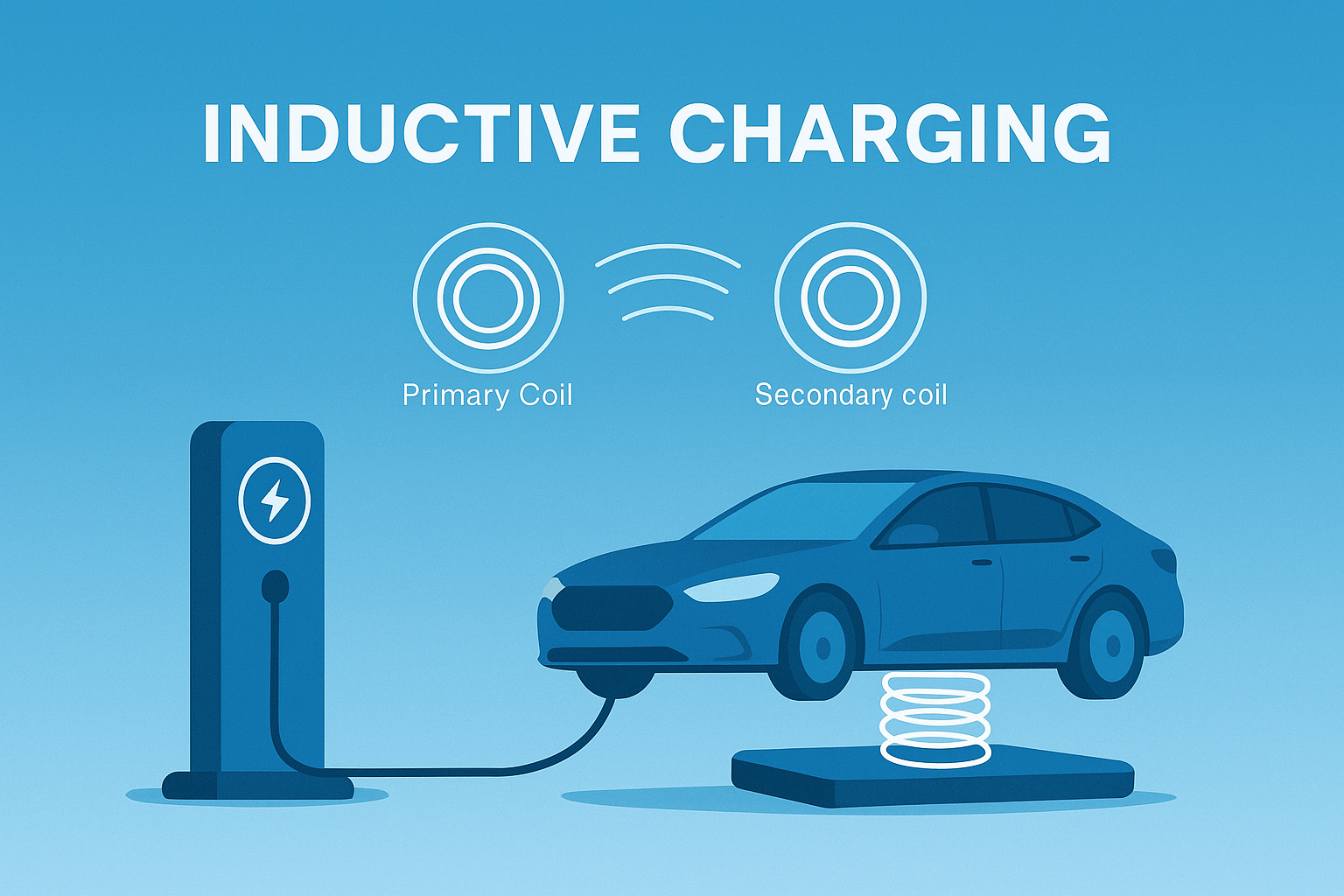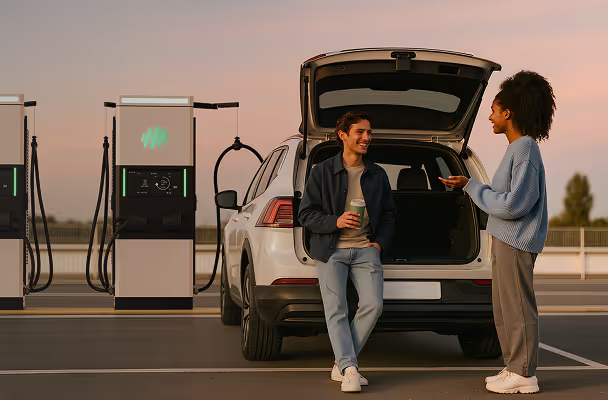Inductive Charging

Inductive charging, also known as wireless charging, is a method of transferring electrical energy through electromagnetic fields rather than physical connectors or cables. This technology is increasingly used in smartphones, electric toothbrushes, and is gaining momentum in the electric vehicle (EV) sector for seamless, contactless power delivery.
How It Works
Inductive charging relies on two main components:
- Primary Coil (Transmitter): Embedded in the ground or charging pad, connected to the power supply.
- Secondary Coil (Receiver): Installed inside the device or EV, receives energy through magnetic coupling.
When the primary coil is energized with alternating current (AC), it generates a magnetic field. This field induces a voltage in the secondary coil, which is then converted into direct current (DC) to charge the battery.
Advantages
- Convenience: No need for cables or plugs.
- Durability: Less wear and tear; no exposed connectors.
- Weatherproof: Works in rain, dust, and snow.
- Automation: Enables autonomous EV charging without hum
Challenges
- Efficiency Loss: Generally 5–15% less efficient than wired charging.
- High Cost: More expensive installation and hardware.
- Alignment Sensitivity: Charging effectiveness depends on precise coil alignment.
- Slower Charging Speeds: Typically slower than DC fast charging.
Applications in EV Sector
- Static Charging: For EVs parked at specific spots (homes, parking lots).
- Dynamic Charging: Charging while vehicles are moving on specially equipped roads.
- Public Transport: Buses and shuttles charging wirelessly at depots or stops.
- Fleet Operations: Reduces downtime by integrating charging into operational schedules.
Industry Standards & Safety
- SAE J2954: Global standard for wireless EV charging interoperability and safety.
- Qi Standard: Widely used in consumer electronics; inspires EV wireless charging protocols.
- EMF Safety: Systems are designed to comply with electromagnetic field exposure limits.
⚡ Callout: Imagine pulling into your driveway and your EV starts charging — no cables, no plugs, just pure convenience. That’s the promise of inductive charging.



